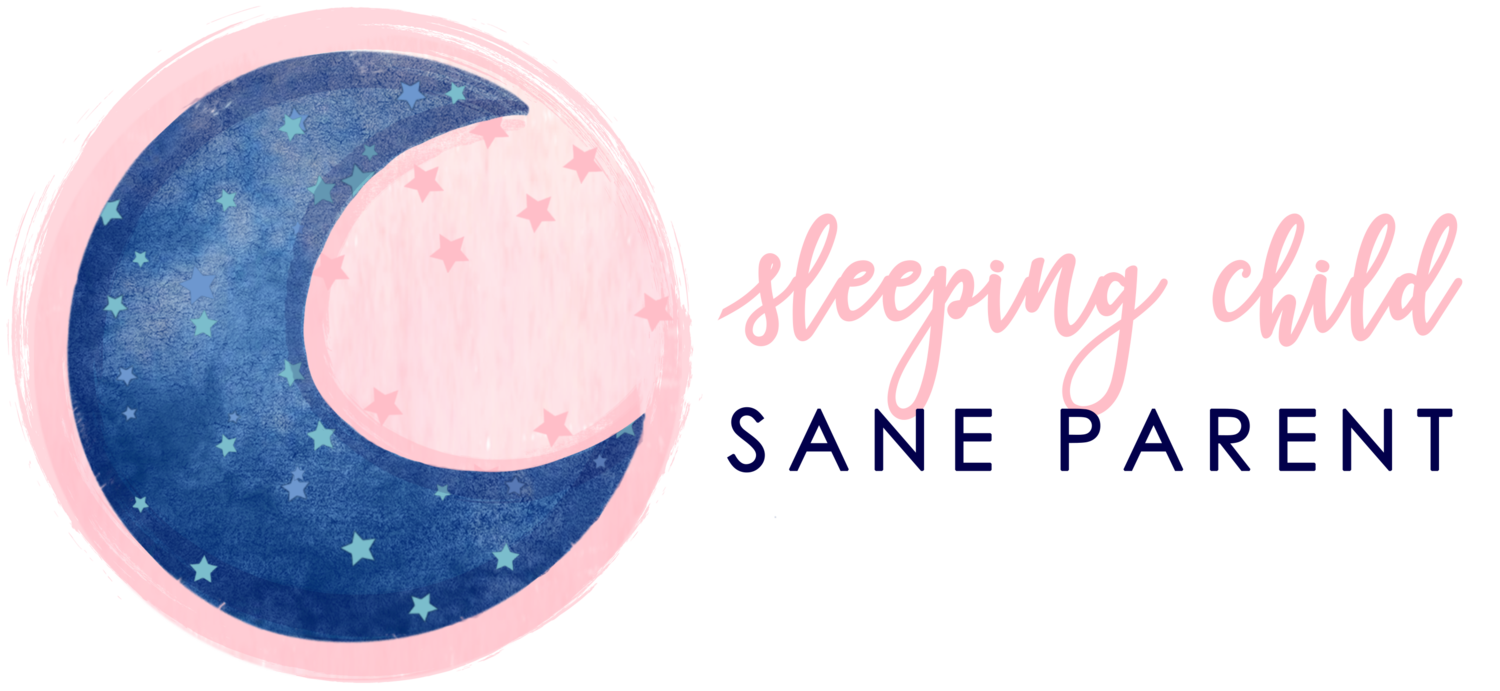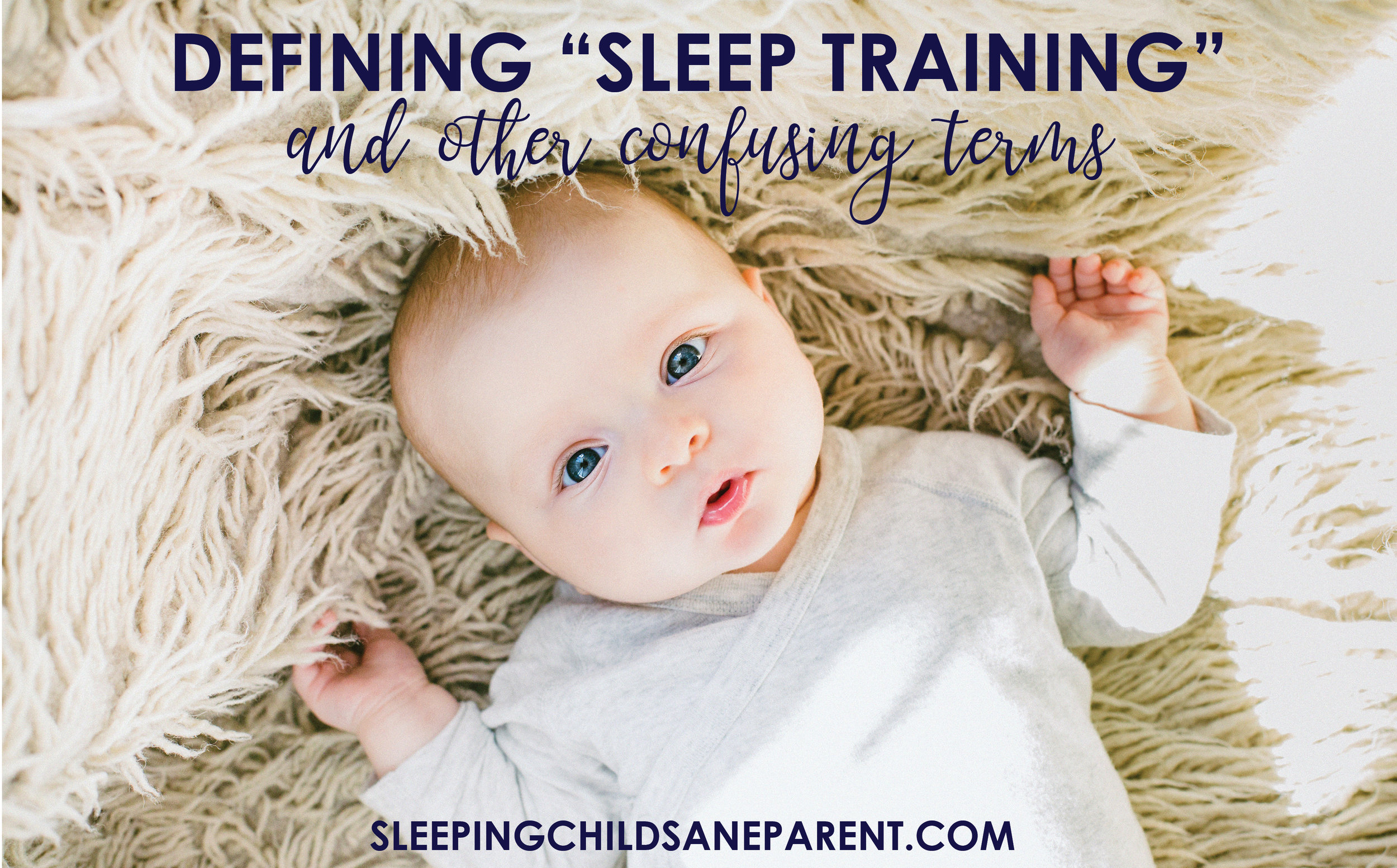I get this question all. the. time. and the truth is, it's a difficult question to answer. The reason for that is because sleep training means different things to different people. Some people are horrified at the words because they automatically take them to mean "cry it out." Some people are shocked if I say you can start sleep training on day 1 because sooooo many experts advise against "sleep training" until 4-6+ months old.
Today, I'm going to spell out a few of my definitions of commonly misinterpreted sleep terms. Keep in mind that this is the way I define things, but if you see the terms in other spaces, the author might mean something different!
Sleep Training
I define sleep training as "teaching your child essential sleep skills."
It's a pretty broad definition, which is one reason that there is always confusion surrounding the term. I wholeheartedly believe that you can begin teaching your child essential sleep skills from day 1. Learning the difference between day sleep and night sleep, falling asleep on his own, sleeping through the night, and taking naps that are at least one hour long are all skills that will take time to develop; however, with many babies, the earlier you start practicing, the earlier they'll master these skills. You can begin teaching these skills early on by establishing an age-appropriate schedule, not rushing to Baby at every single cry (give him a minute to see if he can figure it out himself), treating day sleep and night sleep differently, and understanding that not every cry is a cry for hunger.
Some experts say that any sort of crying method before 4-6 months old is detrimental to Baby, but I do not agree with this. Babies cry to communicate many of their feelings, and no matter what you do, there's no healthy way to completely eliminate crying for the first 4-6 months of Baby's life. Therefore, if you're comfortable with it, I advise allowing a bit of fussing/crying if it will help you teach sleep skills, since that will help you out in the long term.
I do usually suggest holding off on any training methods that may require heavy crying until Baby is about 4 months old, but I've even made some exceptions to that rule.
Cry it Out (CIO)
I define CIO as "giving Baby the opportunity to fall asleep completely on his own, without parental interference."
I see many people use CIO to describe any sleep training method, but I'm actually kind of picky with what I define as CIO. In my experience, there is crying during sleep training no matter what method you choose. Crying is Baby's way of communicating, so of course Baby will be saying "This is hard! I don't know what I'm doing! Why can't we get back to the old way?" when he is being sleep trained, and all those words translate into crying no matter the method being used. But "cry it out" and "sleep training" are not synonymous in my book.
I define Cry it Out as sleep training without parental interference because Baby cries until he figures it out on his own, which is unlike other methods where Baby cries with intermittent reassurances from Mom and Dad.
You can read all about various training methods in other blog posts.
Schedules
As far as babies go, I define having a schedule as "following age-appropriate patterns for wakefulness, naps, and feedings."
I think many people are under the false assumption that "being on a schedule" means that Baby gets to eat at 11am and 11am ONLY -- not 10am, not 10:30am, and not 11:30am. However, as far as I define it, that's just not the case. Babies thrive on routines and schedules, so it's a good idea to establish some sort of schedule early on.
Part of scheduling requires figuring out Baby's ideal wake window (waketime); if Baby's ideal wake window is one hour, you don't want to consistently keep him awake for two hours, as this will make him chronically overtired and fussy.
Another part of scheduling is doing all you can to get Baby full feedings every 2.5-4 hours rather than allowing him little snacking sessions every hour or two all day (and night!) long. Having a schedule does not mean denying food to a hungry baby. If Baby typically eats every 3-4 hours but then one day seems to need food after only 2 hours, by all means feed the baby! In this situation, the extra feeds are likely due to a growth spurt. But if Baby is consistently feeding every 1-2 hours, he's likely just not ever taking a full feed. You can encourage Baby to take full feeds by feeding him upon wakeups rather than feeding him just before a nap -- this way, he's alert enough to continue eating. You can also change his diaper mid-feed to wake him if he's very young and easily drifts off to sleep. Also make sure he has a good latch and you are producing enough milk; consider meeting with a lactation consultant if you are unsure about any feeding issues.
A final part of scheduling is establishing concrete routines. I highly encourage having consistent bedtime and naptime routines, but you can also implement other daily routines, such as tummy time, reading time, and toy time at specific points during the day to help frame your baby's day.
Hopefully you have a better idea of what exactly I mean when I say "sleep training," "cry it out," and "schedules" now. If you have further questions about any sleep definitions, don't hesitate to ask me in a comment below!


